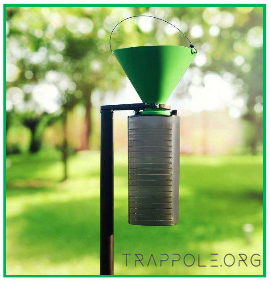Penguins are a quintessential part of the Antarctic and Alaska ecosystem, adapted remarkably to thrive in its extreme conditions. Several species of penguins call Antarctica and its surrounding islands home, each uniquely suited to life in this icy realm.
The Emperor Penguin, the largest of all penguin species, is perhaps the most iconic. These majestic birds are known for their incredible endurance and resilience, particularly during the harsh Antarctic winter. They engage in a remarkable breeding cycle that involves lengthy fasts and huddling together in large groups to combat the extreme cold. Research has uncovered that while many penguin pairs do return to the same mate for breeding, fidelity in the strictest sense isn't always the norm. In some cases, female penguins may have one to three partners in a single season, and males may pair with one or two partners. This indicates a form of social monogamy, where pairs bond and raise chicks together, but they might not be exclusively sexually monogamous.
The intricacies of mate selection in penguins are particularly interesting. Unlike many other bird species, it is often the female penguins who take the lead in selecting a mate. This reversal of typical roles sees female penguins competing for male attention, which is a unique aspect of their social structure.
Are penguins monogamous?
Penguins are one of the most iconic symbols of monogamy, but are they really as faithful as they seem? The answer is a bit more complicated than a simple yes or no. While some penguin species are indeed monogamous, others are not. And even within monogamous species, there is some variation in the level of fidelity that is observed.
In this article, we will take a closer look at the mating habits of penguins and explore the evidence for and against penguin monogamy. We will also discuss the factors that may influence the level of fidelity that is observed in different penguin populations.
What is monogamy?

Monogamy is a type of mating system in which a single male and a single female mate for life. This is in contrast to polygamy, in which a single male mates with multiple females, or polyandry, in which a single female mates with multiple males.
Monogamy is thought to be beneficial for both males and females in terms of reproductive success. For males, monogamy ensures that they will be the father of all of their partner's offspring, while for females, monogamy reduces the risk of infanticide by their partner. Discover more on Wikipedia.
Evidence against penguin monogamy
There is also some evidence that suggests that not all penguins are monogamous. For example, a study of penguins in Antarctica found that only about half of the pairs observed were monogamous. The other half of the pairs were either polygynous (one male with multiple females) or polyandrous (one female with multiple males).
Another study, this time of penguins in New Zealand, found that even among monogamous pairs, the males were not always faithful. The study found that about 10% of the males in monogamous pairs were caught mating with other females. These studies suggest that not all penguins are monogamous, and that even among those that are, there is some degree of infidelity.
* **Observational studies** have shown that penguins often mate with the same partner for multiple years. For example, a study of Adélie penguins found that 80% of pairs remained together for at least two breeding seasons.
* **DNA studies** have shown that some penguins form long-term pair bonds. For example, a study of gentoo penguins found that 60% of pairs were composed of individuals that were genetically related.
* **Behavioral studies** have shown that penguins engage in behaviors that are consistent with monogamy, such as allopreening (grooming each other) and mutual incubation (taking turns sitting on the eggs).
This evidence suggests that some species of penguins are monogamous, but it is important to note that not all penguins are monogamous. Some species, such as emperor penguins, are known to engage in polyandry (multiple matings by one female with multiple males).
Why are some penguins not monogamous?
There are a number of reasons why some penguins are monogamous. One reason is that monogamy helps to ensure that both parents are involved in raising the young. When both parents are involved in raising the young, the young are more likely to survive. Another reason why some penguins are monogamous is that it helps to reduce the risk of infanticide. When a penguin pair is monogamous, the male penguin is more likely to protect the female penguin and the young from other penguins who might try to kill them.
Finally, monogamy may also help to improve the chances of a penguin pair finding a mate in the future. When a penguin pair is monogamous, they are more likely to stay together and raise a family together. This means that they are more likely to be available to mate again in the future..
Other reasons why some penguins are not monogamous. Some of these reasons include:
- The high cost of raising young. Penguins typically lay only one or two eggs per year, and it takes a lot of time and energy for both parents to care for their young. If a penguin were to mate with multiple partners, it would be difficult for it to provide adequate care for all of its offspring.
- The need to find a new mate after a partner dies. Penguins often mate for life, but if one partner dies, the other penguin may need to find a new mate in order to reproduce.
- The availability of mates. In some penguin populations, there are more males than females. This can make it difficult for some males to find a mate, and they may be forced to mate with multiple females in order to reproduce.
It is important to note that not all penguins are non-monogamous. Some penguin species, such as the emperor penguin, are strictly monogamous. In these species, penguins mate for life and only ever have one partner.
Conclusion
In conclusion, there is evidence to suggest that some penguins are monogamous, while others are not. The factors that influence whether or not a penguin is monogamous are not fully understood, but it is likely that a combination of biological and environmental factors play a role. Monogamy can have a number of benefits for penguins, including increased reproductive success and improved chick survival. However, it can also be costly, as it requires penguins to invest time and energy into maintaining a long-term relationship.
The impact of monogamy on penguin populations is complex. On the one hand, monogamy can help to stabilized penguin populations by reducing the number of unpaired individuals. On the other hand, monogamy can also limit the genetic diversity of penguin populations, which can make them more vulnerable to disease and environmental change. The study of penguin monogamy is a fascinating area of research that is still in its early stages. As more research is conducted, we will learn more about the factors that influence penguin mating behavior and the impact of monogamy on penguin populations.
Source
Research into penguin mating behaviors has revealed a complex and varied landscape of relationships among different species. While some species, like the Emperor Penguin, are known for their lifelong partnerships and incredible loyalty to their mates, not all penguin species exhibit such strict monogamy.
The Little Penguin, for instance, practices seasonal monogamy, forming pairs only during the breeding season and potentially choosing new partners in subsequent seasons. This behavior allows for genetic diversity within the population. In contrast, the Gentoo Penguin forms long-term partnerships, maintaining strong bonds and loyalty to their mates throughout their lives.
Penguins employ various strategies to attract mates, including the display of colorful patches and vocalizations. These serve as visual and auditory signals of reproductive readiness and fitness, playing a crucial role in mate selection. Courtship rituals often involve synchronized displays, vocalizations, and affectionate behaviors like preening each other's feathers, which are essential for successful reproduction and raising healthy offspring.
This diversity in mating strategies among penguins highlights the complexity of their social and reproductive behaviors, underscoring the adaptability and richness of their interactions within different ecological contexts.






















